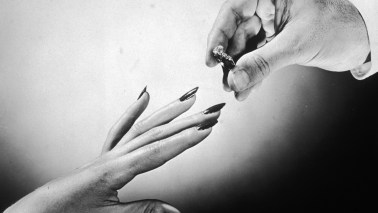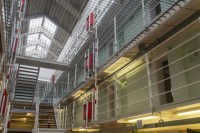I wish I had been at the Châtelet Theatre in Paris on the evening of 18 May 1909 for the dress rehearsal of the new Saison Russe, organised by Sergei Pavlovich Diaghilev, or ‘de’ Diaghilev as he liked to be called.
I wish I had been at the Châtelet Theatre in Paris on the evening of 18 May 1909 for the dress rehearsal of the new Saison Russe, organised by Sergei Pavlovich Diaghilev, or ‘de’ Diaghilev as he liked to be called. That evening, the notable audience invited to the exclusive event were to see ballet as they had never seen it before. Gone were the pretty ladies in frilly skirts, conventional backdrops and purely ornamental choreography. What Mr ‘de’ Diaghilev gave his respectable — and not so respectable — audience (he had intentionally invited some notorious ladies as a publicity stunt) was a cultural shock. When the curtain rose on the dances from Borodin’s Prince Igor, the second item on the programme, the public gasped at the sight of fiercely jumping male dancers in boots and the sensual, exotic movements of their veiled captives. The group of Russian dancers temporarily ‘borrowed’ from the Imperial RussianTheatres became immediately the latest must-see in town. Two years later, most of them were to form the legendary Ballets Russes, a ballet company that revolutionised the entire arts world.
One hundred years down the line, traces of Diaghilev’s artistic legacy are still vividly detectable in our culture, in high art and popular entertainment, as demonstrated by movies and docu-dramas on the subject as well as the many citations found in the videomusic industry and in blockbusters such as Baz Lurhmann’s Moulin Rouge. Yet, the man who masterminded the Ballets Russes remains to date a rather mysterious, contradictory figure.
Diaghilev was no artist as such, but he was the man who turned managerial craft into pure art. His incessant quest for the new — ‘surprise me’ he told young Stravinsky — fed his desire to make waves and to stand out from the crowd. He was unique in using the old art of ballet to start a cultural and artistic revolution, at the core of which was a modernist adaptation of the Gesamtkunstwerk principle, which attracted artists such as Balanchine, Stravinsky, Satie, Picasso, de Chirico and Cocteau. Whether it was because he was a real innovator, or simply because he thrived in succèss de scandale, he instigated provocative experimentations such as Nijinsky’s and Stravinsky’s Sacre du Printemps (The Rite of Spring, 1913). Still, paradoxical as it may sound, it was thanks to his self-professed love for old ballets that classics such as Giselle and Sleeping Beauty made it into the 20th century and are still popular today.
A great charmer and charismatic figure, he exploited the art of networking and good advertising long before PR was invented, and led his company with little or no money. He also managed to live his homosexuality in the open, adding, with his much talked about love affairs — the most famous one with Nijinsky — to the buzz surrounding his company. But was he a real genius, a great charlatan or simply a very lucky person? Indeed, he did not always get it right, as demonstrated by his aborted foray into Futurism, but he always remained afloat, till the day of his death in 1929, after which, deprived of its main raison d’être, his company disbanded.
His multifaceted, contradictory persona inspired a wealth of successors as well as fictional characters, such as the morbidly tyrannical Lermontov in the ballet movie classic The Red Shoes. Interestingly, although he is being celebrated worldwide with galas, exhibitions, conferences and symposia in the centenary of his company, only a handful of the most popular Ballets Russes titles seems to have stood the test of time. But I do not think the man who wanted to be constantly surprised would mind.
English National Ballet will celebrate 100 years of the Ballets Russes next week at Sadler’s Wells with two programmes of performances of some of the company’s great works.





Comments